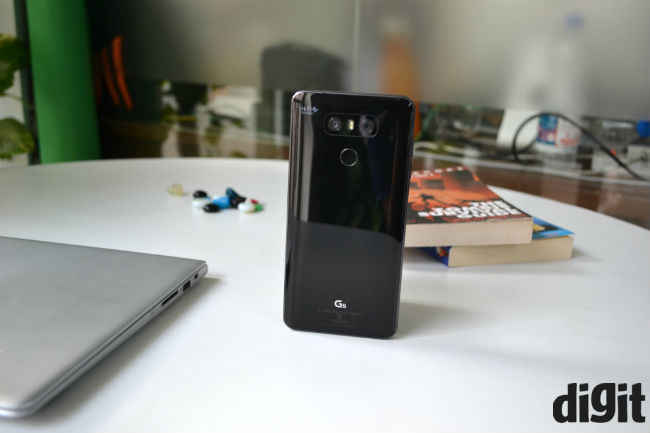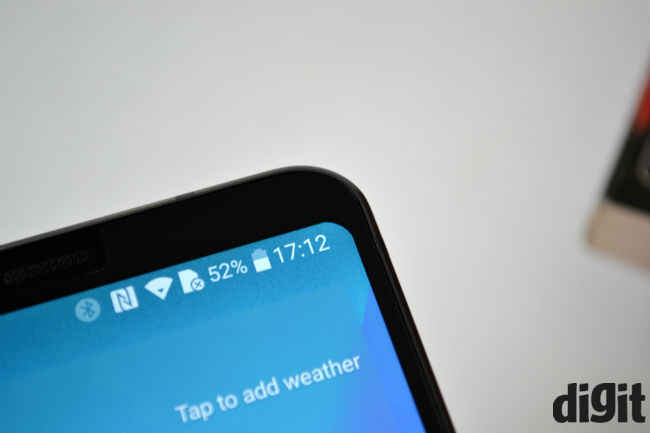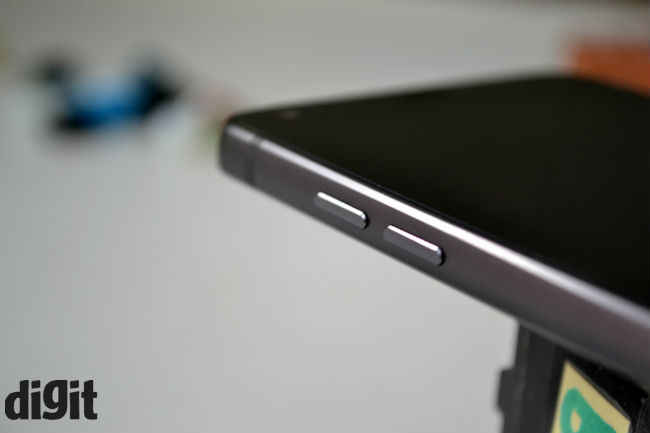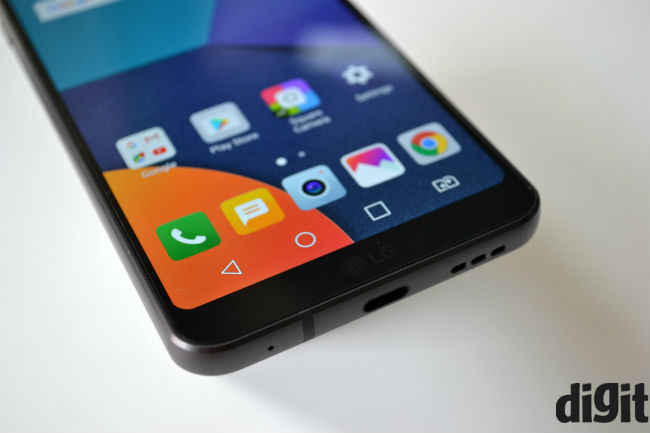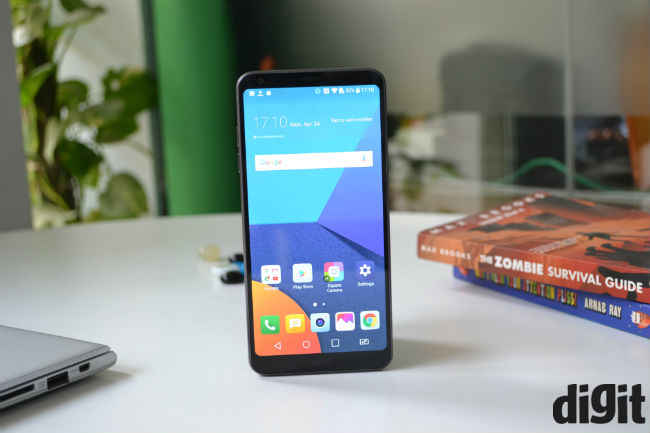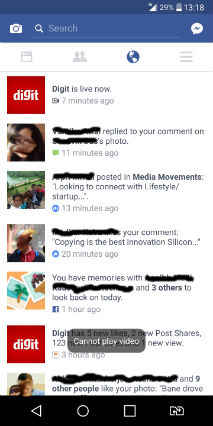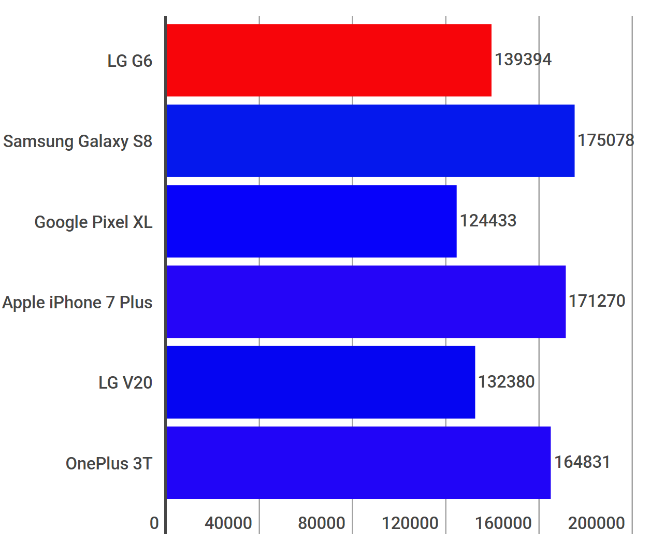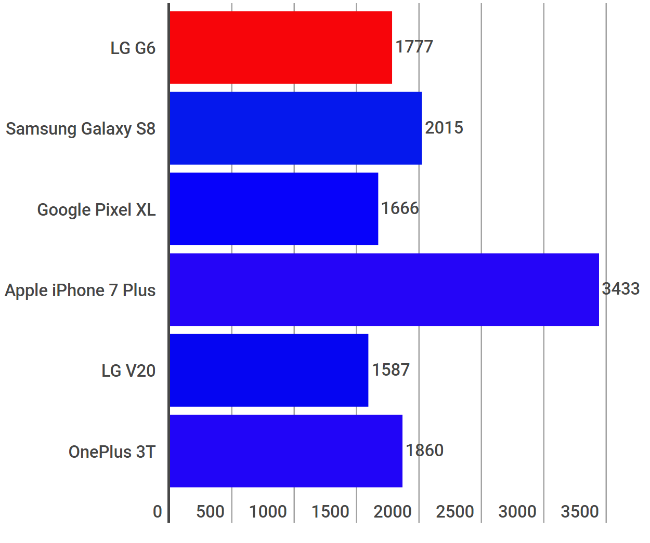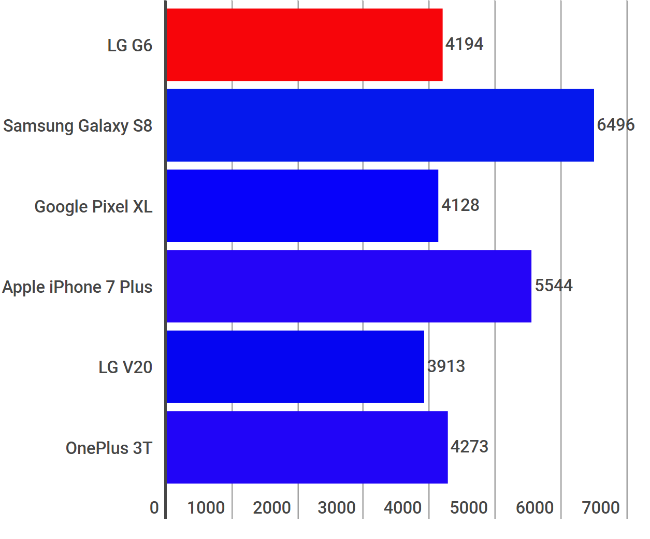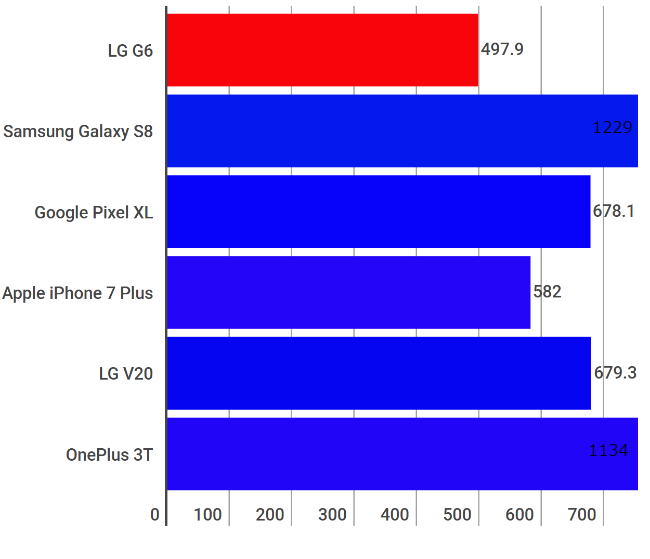The LG G6 is a decent flagship, with a functional design and nice camera. It's really an adequate phone as far as flagships are concerned. The only problem is, flagships should be more than just adequate. It doesn't hold a candle to the Galaxy S8, but it has us excited for what the LG V30 will be (if at all there is a V30).
That’s not to say the LG G6 has nothing new about it, but it’s a functional approach to flagship smartphones instead of flashy, over the top features and head-turning designs. To be fair, that’s always been LG’s approach to smartphones, but this time it’s done slightly better than the last. With that said, and having failed at not mentioning the G5, here's how the LG G6 fares.
Build and Design
I’ve always been a fan of LG’s unorthodox, but functional approach to designing phones. The LG G4 (review) had leather amidst a sea of metallic devices, while the LG G3 (review) was the one that proved 5.5 inch screens can still be used on compact phones. The LG G5 was a stark failure, but it was still a more “courageous” approach than a missing headphone jack.
On the LG G6, the company is accepting industry standards and doing the best it can while sticking to its philosophies. There’s a glass back that can be slippery when your hands are sweating. A metallic frame runs around the phone, which gives it a sturdy feel. As with the Samsung Galaxy S8 (review), Corning Gorilla Glass 5 on the back of the LG G6 can break, but its metallic frame allows better grip than the competitor’s all-glass design.
The phone and its display have rounded corners, creating a slightly different facade than what we’re used to. Together with the tall and narrow form factor, the LG G6 difficult to miss. It won’t be a head turner, but it won’t be lost in the sea of similarly designed smartphones either.
While we’re on that topic, it’s worth noting that the tall and narrow form factor also helps single-handed usage. I must say the Samsung Galaxy S8 felt even more compact, but combined with a good grip, the LG G6 does feel less precarious (even though it really isn’t). I’m much more comfortable using this phone without a case than I was with the S8.
The dual-camera module rests on the back and looks exactly the same as on the G5. Below it is the fingerprint sensor-cum-home button, while the SIM slot and volume rocker lie on either side.
Overall, the LG G6 is not the phone you’d buy to show off. It has an understated design, but it will impress smartphone purists. To top it all off, it’s IP68 certified too.
Display
Get accustomed to 5.7 inch and above on flagships, because that’s where the future is, or at least that's how it seems. LG has used the same Univisium technology as Samsung. In fact, chronologically speaking, LG was the first to announce 18.5:9 aspect ratio on its flagship. I’ll just direct you to this story to understand what it does.
As mentioned before, it’s a tall and narrow display, which leads to pillarboxing effects on either side (black bars on either side of apps/movies). That happens on almost every app and video that you watch right now, but will hopefully change in future. Regardless, if Univisium allows phones to be compact then I’m all for it.
LG has used a QHD IPS panel on this one, with 564ppi pixel density and excellent colour balance. Touch response is also nice once you’ve removed the screen cover (which comes pre-installed). LG uses Gorilla Glass 3 here (I don’t know why), but while spec-junkies may have a problem with that, it really doesn’t affect touch response or feel. Breakability is also more or less the same, at least in practical usage. That means the screen will break if you drop it on concrete, just like any other phone.
The display does look great, but I would personally prefer better black levels. Contrast and black levels are strikingly lower compared to AMOLED flagships, making one wonder why LG refuses to use its excellent OLED panels on smartphones. Despite the fact that this is a good display, I would have to rate this below the Samsung Galaxy S8, simply because things don't look as strikingly vibrant here. You notice the difference especially when watching darker videos, with a lot of blacks, grey and whites. For the record, the LG G Flex series has made use of the company's OLED panels.
Performance and UI
We usually have separate sections for performance and software, but in this case they go hand-in-hand. Before you ask, yes the Snapdragon 821 is an older SoC, but it’s neither slow nor incapable. In an earlier article about the Snapdragon 835, I explained how the new SoC is evolutionary instead of revolutionary. I have to agree that a Snapdragon 835 on the spec sheet would have been better, but this isn’t really bad either.
Having said that, I wish LG did a better job of implementing the 821. My review unit was littered with bugs from the start. Black screens and app crashes were all too common. In fact, the 3D Mark benchmark kept crashing till we uninstalled and reloaded it. Similarly, Facebook's live videos wouldn’t play sometimes, with a “Cannot play video message”.
While these are just bugs, I also found basic lags and stutters when launching apps or scrolling through interfaces. The LG G6 isn’t a particularly slow phone, but these things mar a flagship experience. Moreover, benchmark results fall drastically once SIM card and mobile networks are turned on, with 15 new apps over those that are already there. That's an ominous sign for any Android phone, since the software will slow it down over time any way.
I’m inclined to put this down to poorly tuned software, because overall performance scores on the LG G6 are just about 10% more than the G5. Given that LG’s UI is pretty much just change for change’s sake, I’m not impressed.
AnTuTu Benchmark
Geekbench 4 Single Core
Geekbench 4 Multi Core
GFXBench Car Chase
While the LG G6 manages heat quite efficiently, the phone isn’t the top flagship for gaming. GPU frequencies remain at about a third of the Adreno 530’s full capacity. Frame rates are adequate, but average results remain quite low. So, the LG G6 is behind competitors like the Galaxy S8 and Google Pixel, in comparative terms.
Adequate really is the best way to define the G6’s performance. It’s just that flagship class performance should be more than that.
Audio Quality
I’m no audiophile, but the 32-bit Hi-Fi Quad DAC makes a difference in terms of audio quality as long as you have good headphones. With the right headphones (high-end), you’ll enjoy watching movies or listening to music on this phone. Regular audio is loud, and perhaps incrementally better than what we usually get.
Camera
There’s a slight change in the camera this time. The LG G6 has two 13MP sensors on the back and one of these comes with a fisheye lens. The sensor on this camera has been bumped from 8MP to 13MP this time, while the primary sensor drops from 16MP to 13MP. While you’re usually going to use the cameras separately, using same resolution Sony IMX258 sensors allows seamless zooming between the two this time. There's a button on the camera app that lets you switch from the regular camera to fisheye.
Final image quality is great, just as it was last time. Colours are decently balanced, though not completely accurate, while sharpness and detail levels are quite good. Images are good in both low light and well lit conditions, but the camera takes a tad too long to focus in low light conditions. Also, images can appear smeared at times.
The fisheye camera is more useful this time. Higher resolution has helped here, and if you know how to use a fisheye lens, this is the only phone that can give those unique photos.
Overall, the LG G6 has a decent camera, but here again, the Google Pixel (review), Galaxy S8 and iPhone 7s Plus (review) are well ahead. This phone is cheaper than all of them, but perhaps LG can do better.
Google Assistant
Google was at pretty much every launch event at Mobile World Congress this year. So, the Google Assistant doesn’t really make the G6 special. I’ve never been a big fan of the AI assistants any way, just like I didn’t like Bixby on the S8 (which is unfinished at the moment), and I find nothing special here. Frankly speaking, AI assistants are just gimmicks right now. They can answer questions, take voice commands, but fail at the most basic tasks. Perhaps they’ll improve over time, though. After all, Google and company seem hell bent on making them a big deal.
Battery
As per my usage, the LG G6 is more battery efficient than many other flagships. However, that’s still just about adequate performance. The PC Mark test runs for just over 11 hours, while the phone manages to last 14-16 hours on regular usage. That, with about 45 minutes playing games, 15 phone calls, an hour streaming TV shows and some regular social networking, text messages and IMs.
I really wish smartphone makers start focusing on battery life, but that doesn’t seem to be happening. It seems adequate is all we’ll get with flagship smartphones, at least for the time being. It’s not fair, but it doesn’t seem like consumers are raising their voices against this either.
Bottomline
Remember how I said adequate is the word to describe the LG G6? Well, that’s my conclusion after reviewing the device. It is a quintessential LG flagship and does what it’s meant to. It would have been one of my 2017 recommendations had it not been for sub-par performance described above. The LG G6 is a phone for the purist, but LG needs to work out the kinks to really make this worth buying. If this is the first attempt, then I do look forward to the LG V30 (or whatever it’ll be called) during the second half of this year. It seems that’ll be LG’s real flagship this year, if at all there is a LG V30.

